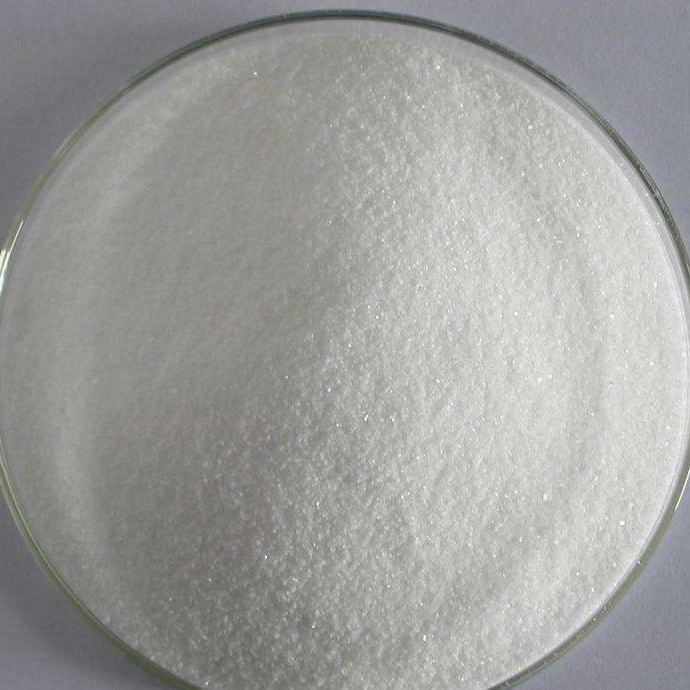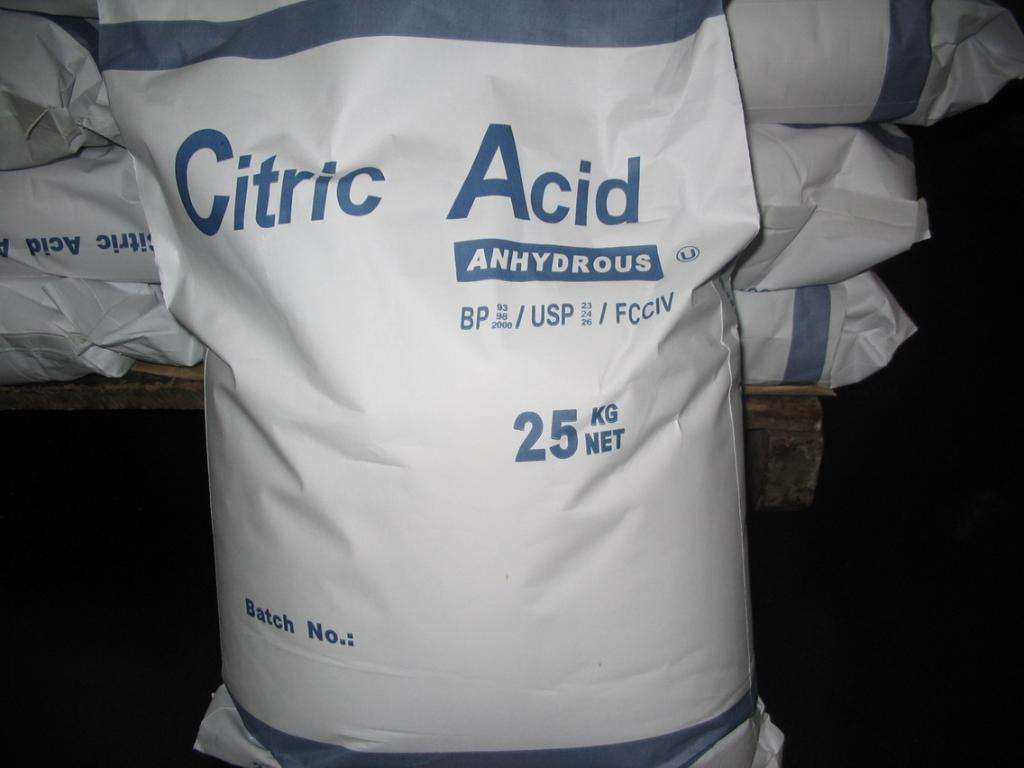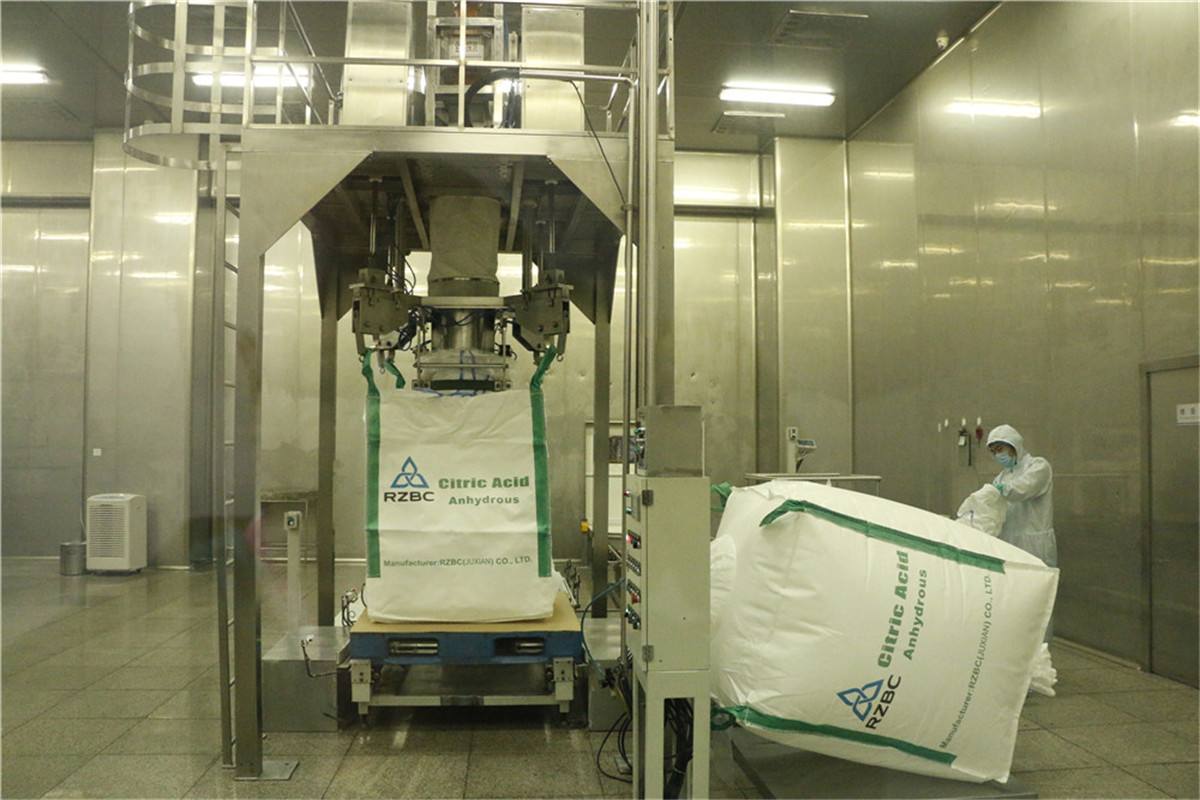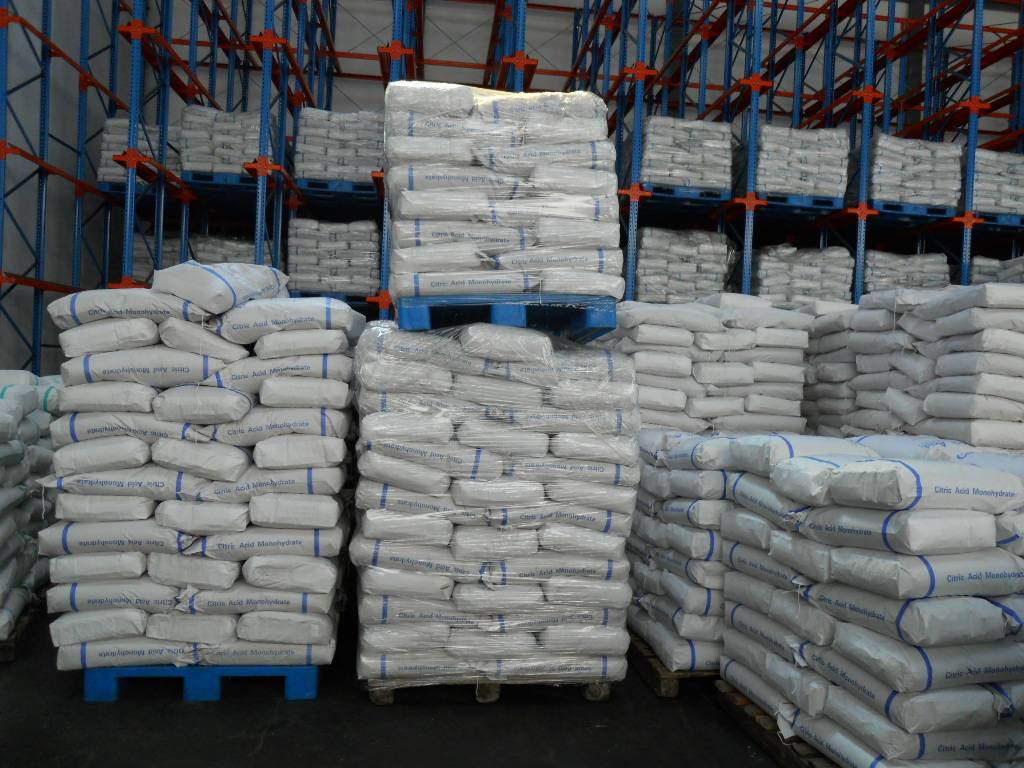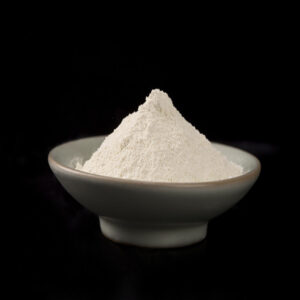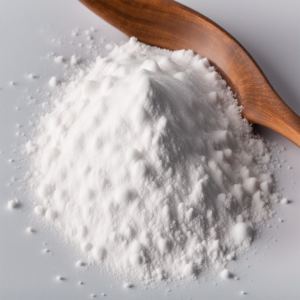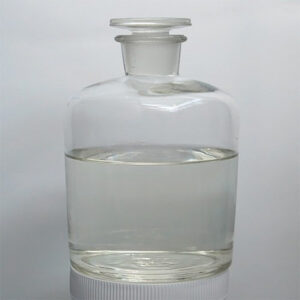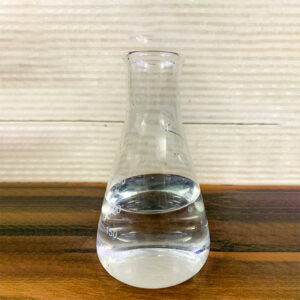Chemicalappearance
Anhydrous citric acid is presented in a white crystaline powder.It is also packaged in the form of colores granules or crystals. The crystals have no odor but have a
strong acid taste.
Chemical application and strengths:
Anhydrous citric acid has similar properties to citnic acid monohydrate.The difference is the crystalization procedure. While the monohydrate citric acid is
cnystaized in cold water, the anhydrous foms are crystallized in water at a temperature of78 degrees Celsius. in the process,itloses allthe water within the
crystals.
Citric acid anhydrous is one of the strong edible acids. Due to that propery,it is a common food additive to enhance its favor. t is also used for preservation of
foods especially candies and soft dhinks. In addition, it reats with diferent metals to form citrate salts that are used as dietary supplements for people who lacl
minerals such as iron, sodium and magnesium.
Ice cream manufacturers use citric acid as an emulifving agent t prevents the crystaization of sucrose as wellas the separation of fats under cold
temperatures. Chefs also use it in place of fresh lemon juice in preparing various meals
On the industial scale, citic acid anhydrous is reacted with sodium bicarbonate to produce a number of products due tothe resuting efervescent efect first
it is used in the preparation of antacid powders and tablets. The efect is also used in the manufacture of personal care products such as bath salts and bath
bombs.
Buy Citric Acid:
Citric Acid for sale is avalable here at Xiongda Chemical along with many other industrial chemicals for sale. Contact us today to get a FREE quote.
Item |
Unit |
BP |
USP |
FCC |
E33O |
GB1886.235- 2016 |
Characters |
/ |
White Crystallin© Powders. Colorless Crystals or Granules. Odorless, has a strongly acid taste. |
||||
Identification |
/ |
Pass Test |
||||
Color & Clarity of Solution |
/ |
Pass Test |
Pass Test |
/ |
/ |
/ |
Assay |
% |
99.5-100.5 |
99.5-100.5 |
99.5-100.5 |
>99.5% |
99.5-100.5 |
Water |
% |
<1.0 |
<1.0 |
<0.5 |
<0.5 |
<0.5 |
Readily Carbonisable Substances |
/ |
Not Darker than Standard |
Not Darker than Standard |
A<0.52, T>30% |
Not Darker tha n Standard |
<1.0 |
Sulphated Ash |
% |
<0.1 |
<0.1 |
<0.05 |
<0.05 |
<0.05 |
Chloride |
ppm |
/ |
/ |
/ |
/ |
<50 |
Sulphate |
PPm |
<150 |
<150 |
/ |
/ |
<100 |
Oxalate |
ppm |
<360 |
<360 |
Pass Test |
<ioo |
<100 |
Calcium |
PPm |
/ |
/ |
/ |
/ |
<200 |
Arsenic |
ppm |
/ |
/ |
/ |
<1.0 |
<1.0 |
Lead |
PPm |
/ |
/ |
<0.5 |
<0.5 |
<0.5 |
Aluminum |
PPm |
<0.2 |
<0.2 |
/ |
/ |
/ |
Mercury |
PPm |
/ |
/ |
/ |
<1 |
/ |
Heavy Metals |
ppm |
/ |
<10 |
/ |
/ |
/ |
Bacterial Endotoxins |
IU/mg |
<0.5 |
Pass Test |
/ |
/ |
/ |
Conclusion |
Ap proved |
|||||

